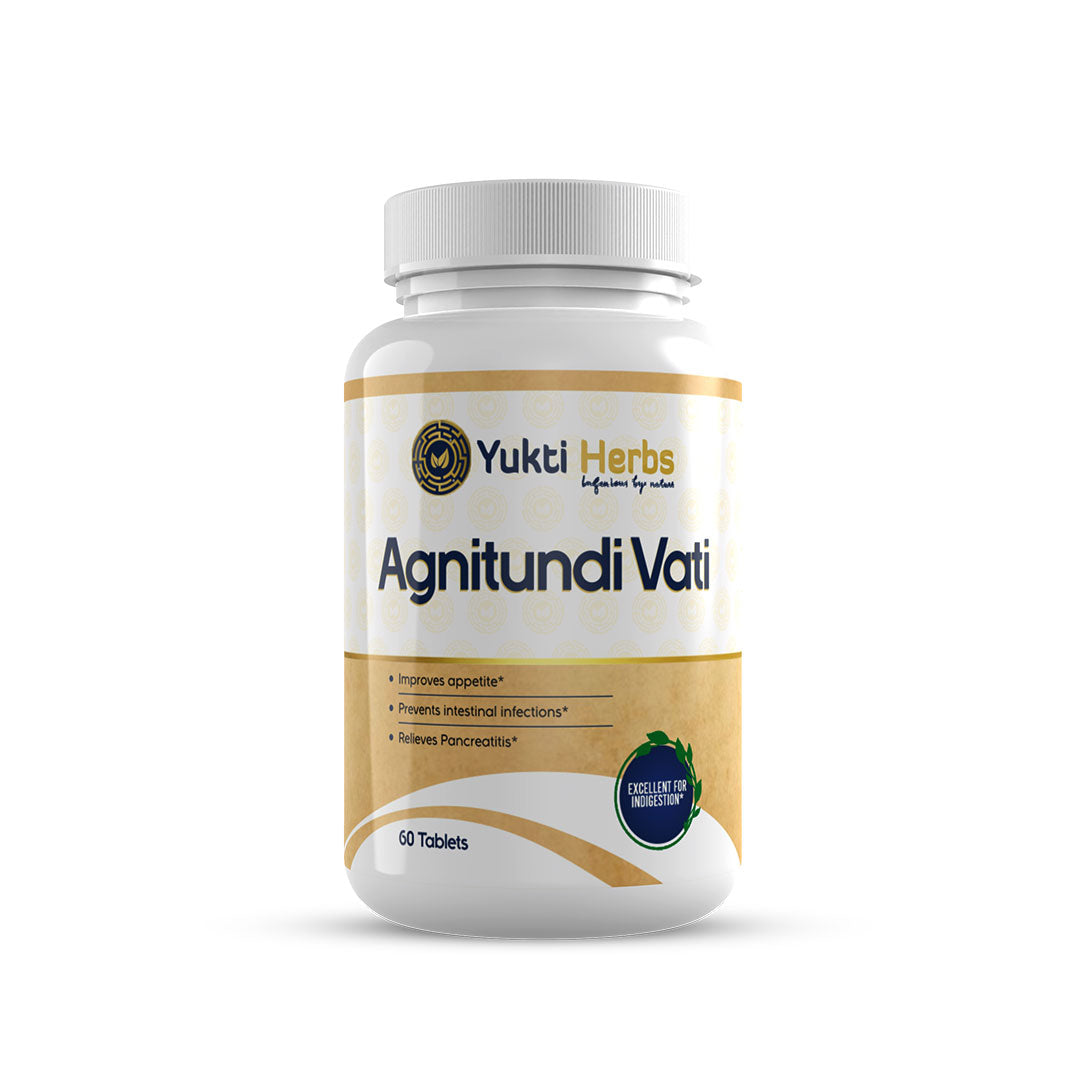
Panchakarma Therapies to Reverse Fatty Liver: A Complete Ayurvedic Approach to Revive Natural Liver Functions
The liver (called ‘Yakrit’ in Sanskrit or Ayurveda) is often referred to as the master chemist of the body—a tireless engine of metabolism, detoxification, and overall energy. It is arguably our most resilient organ, but in this fast-paced modern world, it is increasingly under silent attacks.
We call it ‘Fatty Liver Disease’, or ‘Yakritodara’ in Ayurveda. Fatty liver disease is not just a diagnosis from modern medicine; it is an ancient imbalance asking for a deeper, more systematic rebalancing. Fatty liver disease silently steals our health through excess fat accumulation in liver cells, which interrupts liver function and, if left untreated, can lead to serious problems like fibrosis or cirrhosis.
Yukti Herbs recognises that the liver is more than an organ—it’s an internal vitality engine! With authentic help from Ayurveda and Panchakarma, we can help restore the liver’s strength, clarity, and balance, which will alleviate symptoms and revitalise the liver to its normal state.
This article is meant as an extensive guide—a healing journey through Ayurveda—that shows clients how Panchakarma therapies can help reverse fatty liver, help balance metabolism, and return energy and hope to a person who has been lacking them.
Getting to Know Fatty Liver ︳The Silent Epidemic Entering Your Liver ︳
What is Fatty Liver Disease?
Fatty liver disease, or ‘hepatic steatosis’, can develop when the liver cells become filled with fat and cannot operate at optimal efficiency. With time, the fat will cause inflammation, which can lead to scarring and fibrosis if left untreated.
Two Types of Fatty Liver Disease:
Non-Alcoholic Fatty Liver Disease (NAFLD):
-
Found in individuals who have very little or no intake of alcohol.
-
It has a strong association with obesity, diabetes, metabolic syndrome, and a sedentary lifestyle.
-
It is the fastest-growing liver disease in India, with approximately 25% of the population affected.
Alcoholic Fatty Liver Disease (AFLD):
-
This type of fatty liver disease is only for people who drink large amounts of alcohol.
-
This condition can quickly progress to inflammation and cirrhosis if drinking continues.

Symptoms You Should Not Ignore
Fatty liver disease can remain "silent" in the initial phases of the disease, which is what makes it more dangerous. Most people do not learn they have it until a routine health check reveals changes in the ‘LFT’ (Liver Function Test) Report.
However, as the disease progresses, you may develop:
-
A long-lasting sense of tiredness and weakness that does not improve with rest.
-
Unexplained weight gain, especially around the abdomen.
-
Discomfort, or a dull ache, in the upper right side of your abdomen.
-
Bloating, indigestion (including visible gas), and/or irregular bowel movements.
-
Brain fog and difficulty concentrating.
-
Loss of appetite or feeling full.
-
Elevated levels of liver enzymes (ALT, AST) in blood tests.
-
In later stages: yellowing of the skin or eyes (jaundice), dark urine, and swelling of the legs.
Understanding Fatty Liver in Ayurveda: Unfolding the Concept of Yakritodara and Ama
“To truly heal a chronic illness, it is important to uncover its most foundational cause.” We turn to Ayurveda, where fatty liver disease is most closely associated with the complex condition known as ‘Yakritodara’ (disorders referring to the liver and abdomen). Furthermore, there is a primary role of ‘Medovaha Srotas Dusti’ (vitiation of the channels carrying fat tissue) as well as Agni Mandya (weak digestive fire).
Shloka Reference:
अग्निदोषान्मनुष्याणां रोगसङ्घाः पृथग्विधाः| मलवृद्ध्या प्रवर्तन्ते विशेषेणोदराणि तु||मन्देऽग्नौ मलिनैर्भुक्तैरपाकाद्दोषसञ्चयः| प्राणाग्न्यपानान् सन्दूष्य मार्गान्रुद्ध्वाऽधरोत्तरान्||त्वङ्मांसान्तरमागम्य कुक्षिमाध्मापयन् भृशम्| जनयत्युदरं तस्य हेतुं शृणु सलक्षणम् ||
Translation: Weak digestive fire creates many disease situations, primarily by increasing malas (toxins/wastes), resulting in diseases of the abdomen (Udara) with enlargement. When digestive fire is weak, improper food is not digested and doshas (morbid substances) accumulate to block and lodge between the skin and muscle, causing abdominal distension—this is commonly diagnosed as Udara and Yakritodara.1

Reasons for Fatty Liver according to Ayurveda
-
Diet (Aharaja):
Eating too much heavy, oily, fried, or processed foods (Guru and Snigdha Aahar), and eating too much sweets or fermented foods or drinking too much alcohol (Madatya) are all heavy foods that undermine the Agni, increase Kapha, and increase Ama.
-
Lifestyle (Viharaja):
Living a sedentary life without exercise (Avayam), sleeping during the day (Divaswapna), or suppressing natural urges (Vega Dharana).
-
Emotional (Manasika)
Chronic stress across time, anger, jealousy, and frustration—emotions that aggravate Pitta and impair liver function.
The first step is to understand the root cause. The next step, and perhaps the most important, is a systematic purification process.
Shloka Reference-
अत्युष्णलवणक्षारविदाह्यम्लगराशनात् | मिथ्यासंसर्जनाद्रूक्षविरुद्धाशुचिभोजनात् || प्लीहार्शोग्रहणीदोषकर्शनात् कर्मविभ्रमात् | क्लिष्टानामप्रतीकाराद्रौक्ष्याद्वेगविधारणात् || स्रोतसां दूषणादामात् सङ्क्षोभादतिपूरणात् | अर्शोबालशकृद्रोधादन्त्रस्फुटनभेदनात्|| अतिसञ्चितदोषाणां पापं कर्म च कुर्वताम्| उदराण्युपजायन्ते मन्दाग्नीनां विशेषतः||
Translation: These verses from Charka Samhita explain the main causes of Udara Roga (Abdominal Distension)
-
By eating too much hot, salty, alkaline and sour food.
-
Incorrect habits of eating, eating incompatible and unclean food.
-
Wasting diseases due to splenic enlargement, piles, and malabsorption syndromes.
-
Abandon continuing treatment of chronic illnesses.
-
Excessive dryness in the body.
-
Withholding the urge to bowel or urinate.
-
Blocking certain channels of the body.
-
The collection of Ama (toxic undigested food).
-
Excessive accumulation of dushti dhatus.
-
Blockage in the anorectal region.
-
Perforating the intestines.
-
Excessive accumulation of doshas and indulging in sinful activities.
Mandagni (poor digestion) is the most important of these causes, especially with conditions like Yakritodara (fatty liver).2

Panchakarma: The Shodhana Chikitsa for Deep Detoxification from Fatty Liver
Panchakarma, "Five Actions", is the Ayurvedic method for deep purification (Shodhana Chikitsa), with a systematic approach to cleanse the body of accumulated toxins (Ama) and re-establish the imbalanced Doshas from their source, unlike superficial therapies.
While Ayurveda is a complex, structured process and not a superficial routine, the goal of total systemic restructuring is necessary to address issues as deep-seated and metabolic as fatty liver.
The procedure includes 3 integral stages:
-
Purva Karma (Preparatory Procedures): Physically preparing the body and energetically mobilising Ama and/or Doshas that may be deeply seated within the body.
-
Pradhana Karma (Main Procedures): The five main detox procedures.
-
Paschat Karma (Post-Treatment): A full programme of diet and lifestyle to reinforce what has been achieved and to help avert relapse, if possible.
The complete protocol for your successful Fatty Liver reversal will then be created and introduced, customised for your own Prakriti (constitution) and Vikriti (imbalance).
Purva Karma: Mobilising Deeply Held Toxins
Prior to the body being able to eliminate toxins, it may be necessary to mobilise them from deep tissues where they are lodged. This is pivotal to the entire process of effective and safe detoxification.
|
Procedure |
Purpose: To Manage Fatty Liver |
Clinical Advantages |
|
Snehana |
|
Mobilisation of deep layers of held fat and toxic residue from liver cells. |
|
Swedana |
|
Increased circulation and liquefaction of Kapha in preparation for Shodhana. |
The Fundamental Panchakarma Protocol for Liver Reversal
The primary Pradhana Karma in this process emphasises specifically the channels of elimination that are nearest to the liver and its associated Doshas:
Instructions for Posting this section -
(Add Hyperlinks of blogs of various Panchakarma procedures under respective procedures)
A.Virechana Karma (Therapeutic Purgation): The Master Liver Cleanse
-
Gold Standard: Virechana is unanimously the most effective Panchakarma to treat liver conditions for all types of fatty liver. The liver is the primary site of Pitta (heat/inflammation) accumulation, and therefore, Virechana is the most effective treatment for removing excess, vitiated Pitta (and the accompanying Ama) from the body through the anal route.
-
By clearing the toxic Pitta and Ama that is driving the inflammation (steatohepatitis) and the metabolic stasis, Virechana both prevents the inflammation but also dramatically increases the functional threshold of the liver cells, normalising the bile outflow and simultaneously resolving the driving factor causing the liver condition.
B. Vamana Karma (Therapeutic Emesis): Cleansing Kapha and Meda Impairments
-
The Importance of Meda Reduction: Since Fatty Liver is essentially a Santarpanottha Vyadhi (disease of over-nourishment and accumulation) with the bulk of the pathology situated in the Kapha and Meda Dhatu, Vamana is integral for producing results, especially among obese patients or someone with a predominant Kapha imbalance.
-
Mechanism of Action for Fatty Liver: Vamana will evacuate excess Kapha from the stomach and chest, where most of Kapha accumulates. When you decrease this foundational Kapha load, Vamana has a potential effect of restarting metabolism and addressing the Meda pathway, plus opens the possibility for deeper cleansing.
C. Basti Karma (Medicated Enema): Balancing Metabolism and Gut Health
The large intestine (Pakwashaya) is considered the main domicile of Vata Dosha. Generally, in Fatty Liver, the imbalance of Vata will respond secondarily and manifest as improper appetite, irregular emptying of the bowels, metabolic instability, etc.
-
Kaphahara and Lekhana Basti: Kaphahara and Lekhana Basti utilise very potent decoctions and oils to clear Kapha (fat) and enact both Kaphahara and Lekhana actions on the internal fat and metabolic debris. ‘Basti’ (medicated enema) improves transit time in the gut, regulates Apana Vayu, and the metabolic changes arising from the Virechana. Kaphahara/Lekhana Basti creates a better gut environment, enables healthy metabolism, and reduces the burden on the liver indirectly.
The Science of Panchakarma for Fatty Liver
Panchakarma delivers what modern medicine calls lipophilic-mediated detoxification—the only recognised process capable of removing fat-soluble toxins (such as environmental pollutants, pesticides, and heavy metals) that build up in fat tissues and are a burden to liver function.
For fatty liver disease, specifically, Panchakarma:
✓ Eliminates Ama and extra fat build-up from liver cells, thus decreasing hepatic inflammation
✓ Increases Agni (digestive metabolism), preventing any further build-up of fat
✓ Re-establishes Kapha-Pitta balance for optimal liver metabolism
✓ Clears Srotas (channels), for proper transport of nutrients and removal of waste
✓ Normalises stress and cortisol, which are linked to fat storage in the liver
✓ Improves basic metabolism, thus encouraging steady weight loss
Beyond Detox: Shamana Chikitsa, and Classical Herbal Support
Panchakarma is a deep therapeutic intervention, but for fatty liver reversal to be successful and sustained, Ayurveda must follow with Shamana Chikitsa: the palliative/tonifying phase, where internal Ayurvedic medicine is used systematically for liver health, so we can correct the underlying tissue damage and maintain the Agni boost, and the liver can regenerate. The end goal is to provide hepatoprotection and maintain the cleansing effects of Shodhana with selected formulations. At Yukti Herbs, we use classical herbal formulations that have been time-tested over centuries and prescribed with clinical precision.
The Clinical Benefit at Yukti Herbs
We have a clinical focus on moving beyond individual herbs into synergetic combinations; after a Shodhana, the post-Panchakarma care includes highly concentrated extracts and classical compounds delivered in specific Anupana (adjuvants), allowing for maximum absorbability and efficacy for prolonged liver healing.

The Yukti Herbs Method to Treat Fatty Liver
Yukti Herbs recognises that each individual is on their own unique healing journey. Our method combines the classic wisdom of Ayurveda with evidence-based modern diagnostic detail, allowing for personalised treatment protocols to truly honour you as an exceptional mind, body, and spirit.
What is included in our treatment process
-
Complete Assessment: thorough evaluation of Prakriti (Body Constitution), Vikriti (the current imbalance), diet, lifestyle, mental stress, and full health history
-
Authentic Panchakarma Treatments: Treatments delivered in the classical Ayurvedic tradition of purification from carefully trained and qualified BAMS practitioners, implementing risk-free treatment protocols and ensuring maximum health benefits.
-
Custom Herbal Treatments: You will receive safe, effective, and tested medicines tailored to your individual circumstances and prepared traditionally.
-
Functional Nutrition Support: You will have realistic Ayurvedic meal options, including recipes that are friendly to Indian tastes.
-
Lifestyle and Yoga Structure: Individualised routines that include specific asanas, pranayama and stress management techniques suited to the individual's dosha.
-
Integrated Follow-up: Ongoing checking of wellness with a combination of traditional techniques (e.g., checking the pulse) and objective laboratory parameters.
-
Long-term Education: Guidance and support for liver health and prevention of recurrence.
Conclusion: Your Individualised Recovery Journey into Liver Healing
Fatty liver disease should not be viewed as a terminal diagnosis but rather as a signal and the possibility for transition. Combining the powerful healing traditions of Panchakarma therapies along with signature herbal remedies, dietary strategies and lifestyle changes, you have a reliable, time-honoured method to address this contemporary condition from a holistic perspective.
Are You Prepared to Start Healing Your Liver?
Your liver has an astonishing ability to regenerate; it wishes to heal. By supporting the body with Panchakarma therapies, herbal medicines, a healthy diet, and lifestyle changes, you can reverse fatty liver and restore health.
Take the First Step Today:
For too long, the liver has done its job. Now, gift your liver a deep cleansing, nourishing, and rejuvenating experience through our authentic Panchakarma therapies…
Start your transformation with Yukti Herbs today
References:
-
Charak Samhita, Chikitsa Sthana, Chapter-13, Shlokas 9-11
-
Charak Samhita, Chikitsa Sthana, Chapter 13, Shlokas 12-15
Book Consultation Explore IPD Program Visit Yukti Herbs
Fatty Liver FAQ’s ( Asking The Most Common Frequently Asked Questions)
Yes, Ayurveda can reverse fatty liver by enhancing digestion, flushing out toxins (Ama) and rejuvenating the health of liver cells through Panchakarma and medicine.
The best Panchakarma treatment for liver detox is called Virechana, or therapeutic purgation, which will regenerate the liver and is especially effective when the individual is Pitta dominant.
The time will vary based on the grade of fatty liver and the individual. Most people see Grade 1 fatty liver improve after 7 days, whereas Grade 2-3 fatty liver can take 14-21 days.
The answer is no. Panchakarma should always be done under the supervision of an Ayurvedic doctor. Some therapies require medicated ghee, herbal purgation, detox therapies, and other procedures that need to be tailored to your dosha balance, as well as liver pathology and strength. Attempting to do the procedures yourself at home may aggravate your digestion or worsen your condition of Pitta imbalance.
Yes, at all stages of fatty liver, but there needs to be an assessment done first. At Yukti Herbs, our doctors will assess your liver function, metabolism, and body type to determine the right gentle detox for early stages, and more aggressive detox therapies for advanced grades, all of which will ensure both safety and maximum regeneration.












Leave a Comment